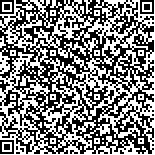下载中心
优秀审稿专家
优秀论文
相关链接
摘要

植被燃烧会产生大量的温室气体,为及时了解自然火灾对区域和全球尺度的碳循环和碳平衡模式的影响,有必要研究自然火灾碳排放的大尺度估算方法。结合遥感技术"宏观、快速、实时、客观"获取地表信息的独特优势,对利用遥感技术估算自然火灾碳排放的方法进行综述,概括了自然火灾碳排放使用的估算模型及其需要的主要输入参数,其次分别介绍了模型输入参数的遥感估算方法,并对各方法的优缺点进行分析和评价,最后提出现有方法的改进建议。
Biomass burning is a widespread practice. During burning, fire combusts organic matter and emitsalarge amount of carbonaceous gases into the atmosphere.Biomass burning not only changes the structure and process of the ecosystem but also affects the carbon cycle of the entire system. To elucidate the impact of wildfire on global carbon cycle, large-scale carbon emissions from biomass burning have been estimated using satellite remote sensing.Many remote-sensing-based models have been developed to estimate biomass burning emissions at different scales. The most widely used model contains four key parameters:burned area, fuel load, burning efficiency, and carbon fraction.The first three parameters can be retrieved from satellite data. This paper discussesmethodologies for the retrieval of these three key input parameters anddescribesthe advantages and disadvantages of each methodology. Methods for the estimation of burned area can be categorized into three types:reflectance-, emission-, and backscatter feature-based methods. Fuel load mapping can be classified as direct and indirect. Indirect fuel load mappingclassifies satellite data to determine the fuel typeand then assigns fuel load value to each pixel depending on the fuel type in the fuel models. This method strongly relies on fuel model and ismostly not suitable for large-scale areas. Direct fuel load mapping estimates fuel load value on the basis of the relationship among fuel load, relative factor of fuel load, and satellite data.Burning efficiency or combustion completeness is usually estimated through direct and indirect retrievalmethods.The direct retrievalmethod is difficult to be usedat alarge scale, whereasthe indirect retrievalmethod maps the burn severity firstand then adjusts the preset fixed burning efficiency on the basis ofburn severity. Finally, suggestions are provided to improve the accuracy of remote sensing in estimating carbon emissions from biomass burning. Many studies have been conducted to retrieve carbon emission-related parameters throughremote sensing. However, the adaptability and uncertainty of theseestimationsfor large-scale areas remain unclear, andthe estimationaccuracy ofglobal carbon emission does not satisfy the demand of research on carbon cycle.

